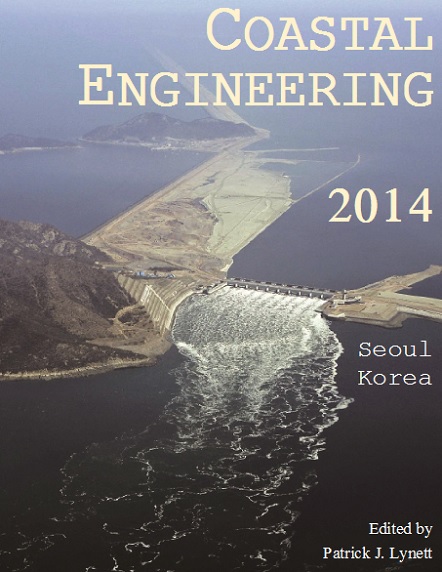Abstract
A Virtual Blade Model approach has been applied to simulate flows across a Horizontal Axis Tidal Turbine (HATT). The 3D-CFD Fluent 14.5 package was employed to solve the Reynolds Averaging Navier Stokes equations. A source term was added in the momentum equation as part of the solution developed through the Blade Element Momentum Theory for an incompressible flow in a open channel. The model was validated against experimental data of a 3 bladed 0.5m diameter turbine in a high speed re-circulating water flume in terms of velocity and Turbulent Kinetic Energy (TKE) profiles. The model results correlate well with the experimental data. The change of flow field and the variation of free surface can be clearly seen in the results.References
ANSYS, I. 2010. ANSYS Fluent Theory Guide, 13 pp.
Barnsley, M.J., and J.F. Wellicome. 1993. Dynamic models of wind turbines-aerodynamic model development. Final Report on contract JOUR 0110 for the Commission of the European Communities Directorate-General XII Science, Research and Development.
Bryden, I.G., T. Grinsted, and G.T. Melville. 2004. Assessing the potential of a simple tidal channel to deliver useful energy, Applied Ocean Research, vol. 26, no. 5, 198-204 pp.
Consul, C.A., R.H.J. Willden and S.C. McIntosh. 2011. An investigation of the influence of free surface effects on the hydrodynamic performance of marine cross-flow turbines, Proceeding of Euro Wave Tidal Energy Conference.
Douglas, C.A., G.P. Harrison, and J.P. Chick. 2008. Life cycle assessment of the Seagen marine current turbine, Proceedings of the Institution of Mechanical Engineers, Part M: Journal of Engineering for the Maritime Environment, vol. 222, no. 1, 1-12 pp.
Drela, M., M. Aero, and A.H. Youngren. 2001. XFOIL 6.9 User Primer, Aerocraft, Inc.
Malki, R., A.J. Williams, T.N. Croft, M. Togneri, and I. Masters. 2013. A coupled blade element momentum - Computational fluid dynamics model for evaluating tidal stream turbine performance, Applied Mathematical Modelling, vol. 37, no. 5, 3006-3020 pp.
Menter, F.R. 1993. Zonal Two Equation k-ω Turbulence Models for Aerodynamic Flows, Turbulence, Heat and Mass Transfer 4, Germany, 1993-2906 pp.
Michael, R. 2005. Unstructured, Multiplex Rotor Source Model With Thrust And Moment Trimming - Fluent's VBM Model, FLUENT.
Mozafari, A.T.J. 2010. Numerical modeling of tidal turbines: Methodology Development and Potential Physical Environmental Effects, University of Washington.
Sun, X., J.P. Chick, and I.G. Bryden. 2008. Laboratory-scale simulation of energy extraction from tidal currents, Renewable Energy, vol. 33, no. 6, 1267-1274 pp.
Tedds, S.C., R.J. Poole, and I. Owen. 2012. Experimental investigation of horizontal axis tidal stream turbine, Ocean Energy.
Williams, A.J., T.N. Croft, I. Masters, M.R. Willis, and M. Cross. 2010. Combined BEM-CFD modelling of tidal stream turbines using site data, Proceedings of the International Conference on
Renewable Energies and Power Quality.

